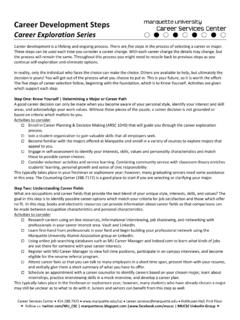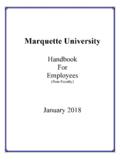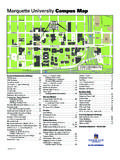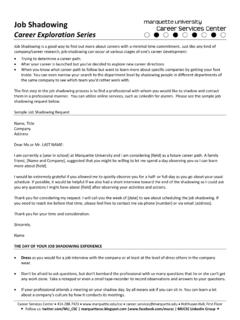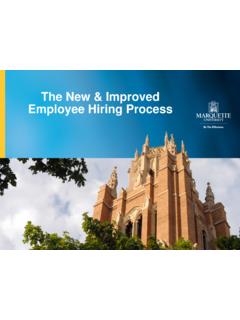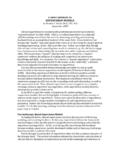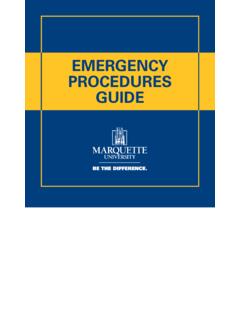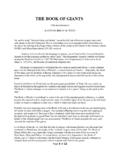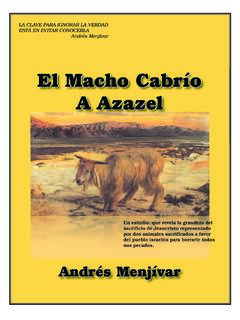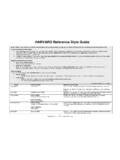Transcription of The Watchers of Satanail: The Fallen Angels …
1 Andrei A. Orlov marquette university The Watchers of Satanail: The Fallen Angels Traditions in 2 (Slavonic) Enoch .. they became servants of Satan and led astray those who dwell upon the dry ground. 1 Enoch 54:6 .. These are the Watchers (Grigori), who turned aside from the Lord, 200 myriads, together with their prince Satanail. 2 Enoch 18:3 Introduction The first part of 2 Enoch, a Jewish pseudepigraphon written in the first century , deals with the heavenly ascent of the seventh antediluvian hero to the abode of the Deity. During his ascent, while receiving instructions from angelic psychopomps about the contents of the heavens, the patriarch encounters a group of the Fallen Angels whom the apocalypse authors designate as the Grigori ( Watchers ).
2 1 The detailed report of the group s transgression given in chapter 18 of the text which mentions the angelic descent on Mount Hermon that led to the subsequent corruption of humanity and procreation of the race of the Giants recalls the peculiar features well-known from the classic descriptions of the fall of the infamous celestial rebels in the Book of the Watchers . This early Enochic booklet unveils the misdeeds of the two hundred Watchers led by their 1 Slav. Григори(ы) (Gk. e)grh&goroi). Sokolov, "Materialy i zametki po starinnoj slavjanskoj literature. Vypusk tretij, VII. Slavjanskaja Kniga Enoha Pravednogo.
3 Teksty, latinskij perevod i izsledovanie. Posmertnyj trud avtora prigotovil k izdaniju M. Speranskij," Chtenija v Obshchestve Istorii i Drevnostej Rossijskih 4 (1910) 16. 1leaders Shemihazah and Asael. The description in the Slavonic apocalypse is striking in that, in contrast to the classic Enochic account, the leadership over the Fallen Watchers is ascribed not to Shemihazah or Asael but to This reference to the negative protagonist of the Adamic story does not appear coincidental. A careful examination of other details of the Fallen Angels traditions in the Slavonic apocalypse shows that the transference of leadership over the Watchers from the Shemihazah and Asael to Satanail is not due to the authors ignorance of the authentic tradition but represents a deliberate theological effort to introduce the Adamic development into the framework of the Enochic story I have previously explored a strong influence of Adamic traditions and motifs in the Enochic account of the Slavonic apocalypse, especially in the materials of the longer recension.
4 Which is rather unusual for a Second Temple Enochic Adam's story occupies a strikingly prominent place in 2 Enoch. The traditions pertaining to the first human can be found in all sections of the book. 4 In these materials Adam is depicted as a glorious angelic being predestined by God to be the ruler of the earth but falling short of God's expectations. Although a major bulk of Adamic materials belongs to the longer recension, which includes, for example, the lengthy Adamic narrative in chapters 30-32, the Adamic tradition is not confined solely to this recension. A number of important Adamic passages are also attested in the shorter recension. The extensive presence of Adamic materials in both recensions and their significance for the theology of the 2 Slav.
5 Сатанаил. Sokolov, Materialy i zametki po starinnoj slavjanskoj literature, 16. 3 Andrei A. Orlov, The Enoch-Metatron tradition (TSAJ, 107; T bingen: Mohr Siebeck, 2005) 211-252; idem, Without Measure and Without Analogy : The tradition of the Divine Body in 2 (Slavonic) Enoch, in A. Orlov, From Apocalypticism to Merkabah Mysticism: Studies in the Slavonic Pseudepigrapha (JSJSup., 114; Leiden: Brill, 2007) 149-174; idem, On the Polemical Nature of 2 (Slavonic) Enoch: A Reply to C. B ttrich, in Orlov, From Apocalypticism to Merkabah Mysticism: Studies in the Slavonic Pseudepigrapha, 239-268. 4 2 Enoch 30:8-32:2; 33:10; 41:1; 42:5; 44:1; 58:1-3; 71:28. 2 Slavonic apocalypse indicates that they are not later interpolations but are part of the original layer of the text.
6 As noted above, such an extensive presence of Adamic materials in the intertestamental Enochic text is quite unusual. In the early Enochic circle reflected in 1 (Ethiopic) Enoch, Adam does not figure prominently. His presence in these materials is marginal and limited to a few insignificant remarks. Moreover, when the authors of the early Enochic booklets invoke the memory of Adam and Eve, they try to either ignore or soften the story of their transgression and fall in the garden. Scholars have previously noticed this remarkable leniency of the Enochic writers toward the mishap of the protological couple in the texts concerned with judgment and accountability.
7 5 This either modest or unusually positive profile which the Protoplasts enjoy in the early Enochic circle can be explained by several factors. Scholars have observed that early Enochic and Adamic traditions appear to operate with different mythologies of The early Enochic tradition bases its understanding of the origin of evil on the 5 Kelley Coblentz Bautch notes that the portrayal of the [first] couple is softened in the Book of the Watchers ; like the holy ones mentioned in 1 En 32:3, they eat from the tree and are made wise (cf. Gen 3:6). No references are made to the serpent, deception, the reproach of God, and additional punishments that figure prominently in the Genesis account.
8 In a text concerned with judgment and accountability, Adam and Eve do not appear as actors in the eschatological drama .. the Animal Apocalypse from the Book of Dream Visions seems even more favorable in its depiction of the first couple. The Animal Apocalypse opts to recast exclusively events familiar from Gen 2 and [it] does not offer a recitation of the fall in the garden. There is no tree, forbidden or otherwise, no illicit gain of knowledge, no expulsion from Eden, and no recapitulation of any part of Gen K. Coblentz Bautch, Adamic traditions in the Parables? A Query on 1 Enoch 69:6, in: Enoch and the Messiah Son of Man: Revisiting the Book of Parables (ed.)
9 G. Boccaccini; Grand Rapids: Eerdmans, 2007) 352-360, at 353-4. 6 In this respect Bautch observes that .. discussion of the Enochic corpus frequently takes up the literature s distinctive view of evil. As is commonly asserted, Enochic texts posit that evil originates with the rebellious Watchers who descend to earth: their prohibited union with women and teaching of forbidden arts lead to the contamination of the human sphere (for example, 1 En 6-11). This observation has led contemporary scholars to delineate two contrasting trends within Second Temple Judaism: one rooted in early Enochic texts like the Book of the Watchers where evil develops as a result of the Angels sin, and the other that understands sin to be the consequence of human failings ( , Gen 3).
10 K. Coblentz Bautch, Adamic traditions in the Parables? A Query on 1 Enoch 69:6, in: Enoch and the Messiah Son of Man: Revisiting the Book of Parables (ed. G. Boccaccini; Grand Rapids: Eerdmans, 2007) 352-360, at 354-5. On the subject of two mythologies of evil see also J. Reeves, Sefer Uzza Wa- Aza(z)el: Exploring Early 3 Watchers story in which the Fallen Angels corrupt human beings by passing on to them various celestial In contrast, the Adamic tradition traces the source of evil to Satan's transgression and the fall of Adam and Eve in Eden -- a trend hinted at in Genesis 3 and fully developed in the Primary Adam Books that trace Satan s demotion to his rejection to obey God s command to venerate a newly created While in the early Enochic circle the presence of Adamic traditions is either marginal or absent altogether, it becomes prominent in 2 Enoch.
